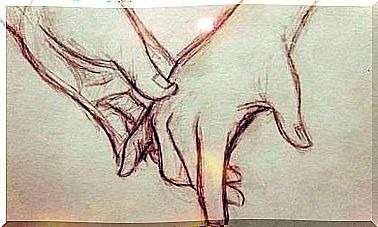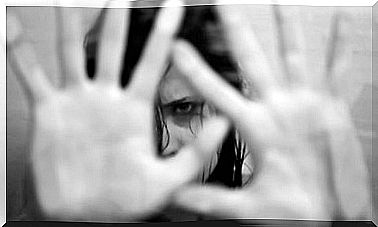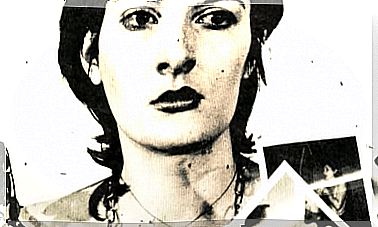How To Go From An Anxious Thought To A Reflective One

Going from an anxious thought to a reflective one takes time, commitment to yourself, and a willingness to change. Because, when the mind gets used to processing reality in a certain way, it is difficult to convince it to do it in another way. However, “educating” her to learn to think healthier is undoubtedly one of the best steps to achieving wellness.
Gandhi said that he did not let anyone cross his mind with dirty feet. Somehow, this symbolic suggestion fits perfectly with our need to take care of everything that enters the immense room that is our mental universe. Because, after all, hygiene is not just taking a bath every day or washing our hands before eating.
Hygiene is also attending to what ideas we value, what thoughts we allow to gain strength in our day-to-day life, and what approaches we validate. Knowing all this would help us cultivate a little more psychological balance. However, sometimes we feel like that traveler who waits on the platform and only sees trains rushing by.
Everything is going very fast and we do not know what is going on inside our mental vehicles. We neglect ourselves and let ourselves be carried away worrying about what may happen tomorrow, without knowing what is happening today in our own being, on our own existential platform.

I want to go from an anxious thought to a reflective one, how to do it?
There are times when convincing a person to move from an anxious thought to a reflective one, a sudden resistance arises. It appears because there are those who link their anxiety only to external factors. Because his life is very busy, his responsibilities many and his problems infinite.
We are the result of the stories that we tell ourselves, which is why it is difficult for us to begin to unfold certain ideas and thought patterns from our minds.
An example, as explained in a study carried out at the University of La Rioja (Spain) by Dr. Nora Londoño, generalized anxiety disorder is fueled by a large number of cognitive distortions. They are wrong ways of processing reality, those to which we are giving more and more power over the months and years. Thus, a few examples of these distortions would be the following:
- Selective abstraction or tunnel vision (only bad things happen to me, everything is against me, etc)
- Confirmatory bias (I was wrong and I already knew what was going to happen, because it is clear that I am not good for this)
- Overgeneralization (that negative thing that happened to me in the past is going to happen again)
- Personalization (my boss has a bad face, it must be my fault)
Our mind acquires an obsessive tendency to function in the worst possible way. Moving from an anxious thought to a reflective one requires changes. These would be some keys to generate them.
Cognitive distance
One way to reduce anxiety is to start viewing your thoughts as mere guesses and not as absolute realities.
Be critical of every idea that your mind produces or that arises as a consequence of your state of mind, then let those that do you no good go – they will soon be forgotten if you think they are something external to you; neither proper nor defining.
Yes to mindfulness ( mindfulness )
There are those who still see the practice of mindfulness as that baseless fad that everyone talks about. However, studies and research, such as the one carried out at Boston University by Dr. Stephan Hofmann, confirm its effectiveness in reducing stress and anxiety.
Learning to focus on the present moment, attending to our thoughts instead of reacting to them, is an exercise to which we should dedicate time and effort. Meditating is a way of moving from an anxious thought to a reflective one.

What you feel is real, what you think is not always true
The mind creates its own stories, while we give them truth. You may tell yourself that you are a denier for certain things, that you are too sensitive and there are certain aspects that you will never be able to handle.
Stop feeding ideas, biases, wrong schemes. .. The only real thing is your mood, your emotions. Take care of them, take care of them, manage them.
Look up, relativize and say yes to useful thinking
People are like that. We have the singular tendency to make five coats out of a ball, a beach out of a grain of sand, a paella out of a couple of grains of rice. .. When anxious thinking takes over, any insignificant problem is magnified, being unable to act in a way. tight and creative.
In these circumstances, it would be very successful if we learned to look up, to relativize and then, from that psychological distance, see things as they are, without drama or negativity. At that moment, the second step would come: encouraging our mind to generate useful ideas, thoughts that act in our favor and not against us.
To conclude, going from an anxious thought to a reflective one is an act of will and also of strength. It requires the signing of a contract with oneself where we can re-educate our mind and convince it that we deserve respect, that we have it to value ourselves as we deserve and use in our favor all the potential that we carry within.









